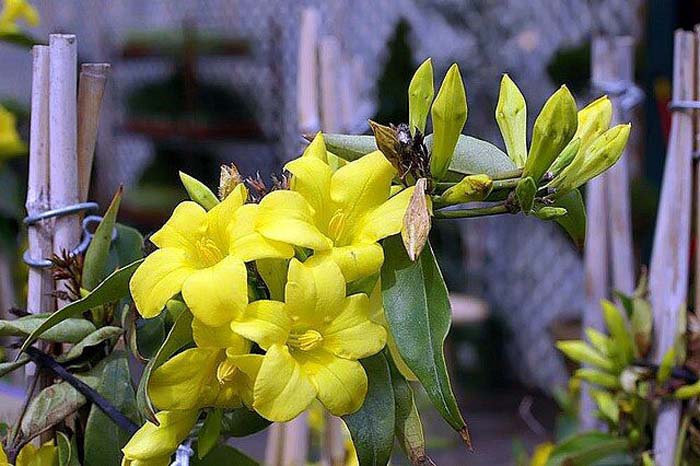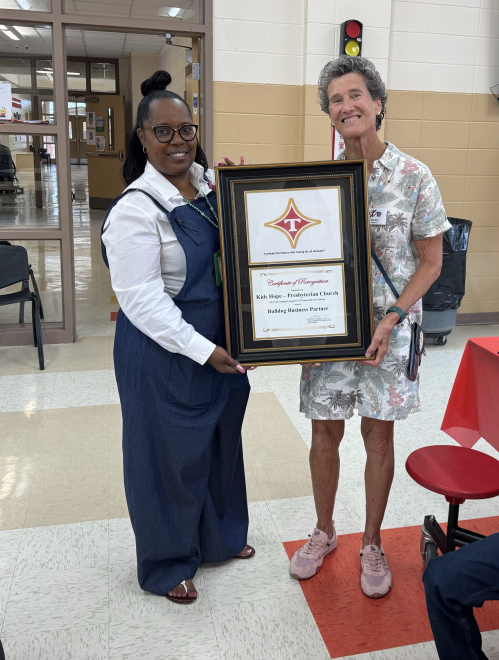Native plants can provide excellent results!
Published 9:53 am Sunday, September 10, 2023

- WILDLIFE FRIENDLY: The Carolina jessamine is native in the southeast from Virginia to Tennessee, Florida and Texas. While it’s an extremely vigorous flowering vine, it’s not invasive.
“One benefit of Summer was that each day we had more light to read by.” — Jeannette Walls.
“By all these lovely tokens, September days are here. With summer’s best of weather and autumn’s best of cheer.” — Helen Hunt Jackson.
“September days have the warmth of summer in their briefer hours, but in their lengthening evenings a prophetic breath of autumn.” — Rowland E. Robinson.
“It was a lovely afternoon—such an afternoon as only September can produce when summer has stolen back for one more day of dream and glamour.” — L.M. Montgomery.
“Outside the leaves on the trees constricted slightly; they were the deep done green of the beginning of autumn. It was a Sunday in September.” — Ali Smith.
September has gotten off to a running start and the month is almost half gone. Fall is only days away! As you continue your landscape planning, consider using native plants since they are most acclimated to local conditions and environmental factors. Native plants are those species that evolved naturally in an area without the disturbance of human intervention.
Landscaping with native plants empowers gardeners to care for nature and enhance the local environment while adding curb appeal and diversity to their grounds. The proper use of native plants in urban and suburban settings can provide excellent results with great curb appeal. Once these native plants are established, they will survive quite well on average annual rainfall. The southeast receives between 40 to 80 inches of rainfall per year, depending on your locale.
Take note of each plant’s preferred soil conditions and partner them to the soil in your landscape. Matching natives with the right conditions will help reduce your landscape’s irrigation needs and further create a wildlife-friendly environment. The following native plants include such icons as the southern live oak tree and the Carolina jessamine vine.
The beautyberry (Callicarpa americana) is native to the southeast from Texas and Oklahoma east to Florida and north to Maryland. Beautyberry is fairly easy to grow, non-aggressive, and offers a bright purple fruit in the fall. It’s an excellent wildlife attractant, as it attracts pollinators in spring and birds in fall and grows best in full sun-part shade and in moist soil conditions.
The Carolina jessamine (Gelsemium sempervirens) is native in the southeast from Virginia to Tennessee, Florida, and Texas. It is an extremely vigorous flowering vine but is not invasive, like kudzu and wisteria. Its twining stems need a support system to wrap around and climb. It’s work well on a trellis, arbor or on a wall. It flowers in early spring exhibiting its beautiful yellow flowers against its evergreen foliage. It grows best in full sun and moist soil conditions.
The crimson-eyed rosemallow (Hibiscus moscheutos) is native to the southeast, east and into the mid-west. A very good herbaceous perennial, it grows in wet soils near streams, ponds and swales. There are many types of hibiscus from the non-native Rose of Sharon to the tropical hibiscus species which prefer heat and do not like wet soil conditions. Of the many hibiscus species, the crimson-eyed rosemallow is an excellent choice because of its ease in adaptability and easy maintenance. It grows best in full sun and wet soil conditions.
The fringe tree (Chionanthus virginicus) is a specimen that is native to the southeast and is hardy into the colder zones. It is a small, flowering tree with a fragrance. It offers lacy white flowers in the spring and lively purple fruits in the fall. It grows best in full sun to partial shade and well-drained soil conditions.
The inland sea oats (Chasmanthium latifolium) is native from Florida to New York, and into the mid-west to New Mexico. This perennial ornamental grass is native to shaded streams and river banks east of the Rocky Mountains. It offers flat leaves on slender stems and flower heads that develop into light, papery, golden brown seeds in the fall. It grows best in part shade and moist soil conditions.
The piedmont azalea (Rhododendron canescens) is native to North Carolina and Tennessee south to central Florida and west to east Texas. It is one of the most common and readily available deciduous azalea shrubs. Its light white-pink blooms come out in the spring just prior to the emergence of its foliage thus showing off its branching structure. This azalea grows best in part shade in acidic, moist soil conditions.
The saw palmetto (Serenoa repens) is native from South Carolina to Florida and west to Texas. It is an excellent choice for use on slopes and coastal areas where there is space for spreading. It is slow growing and drought tolerant. Exercise care in selecting a place to plant the saw palmetto because it is not easily removed once established. It grows best in full sun in dry, sandy soil conditions.
The southern live oak (Quercus virginiana) is native to coastal areas in the southeast, from Virginia to the Florida Keys, and to the Gulf Coast and into coastal Texas. As a large canopy tree, the southern live oak is a highly regarded, iconic tree. Traditionally, it was used along wide country driveways to colonial homes. Today it’s used as a street tree and forms massive canopies in lawns throughout the south. The best time to plant a live oak was thirty years ago (the next best time is now) and it grows best in full sun in well-drained soil conditions.
The southern magnolia (Magnolia grandiflora) is a native that grows throughout the Carolinas, Georgia, northern-central Florida, Alabama, Louisiana and Mississippi and into eastern coastal Texas. It is an awesome large flowering tree with attractive evergreen foliage. It’s deep, glossy green leaves with rusty red undersides and fall fruit make the southern magnolia an excellent ornamental specimen. It grows best in full sun and well-drained soil conditions.
And don’t forget the red maple and flowering dogwood. The use of native and sustainable plants in the landscape is very important. Over the last few years, many exotic and naturalized plants have been selected and used in our landscapes. It is most critical that we realize the potential invasiveness of such plants. Many of these plants have invaded our landscapes and crowded out the natives. Learn more about the native plants and realize that environmental stewardship and sustainability should be at the foundation of all your home landscape activities. Happy Septembering!!!
“Call to Me and I will answer you and tell you great and unsearchable things you do not know.” Jeremiah 33:3. “Stand up and praise the Lord your God, Who is from everlasting to everlasting. Blessed be Your glorious name, and may it be exalted above all blessing and praise.” Nehemiah 9:5. “Teach us to number our days aright, that we may gain a heart of wisdom.” Psalm 90:12. “We were born only yesterday and know nothing, and our days on earth are but a shadow.” Job 8:9. “Nobody should seek his own good, but the good of others.” 1 Corinthians 10:24.





